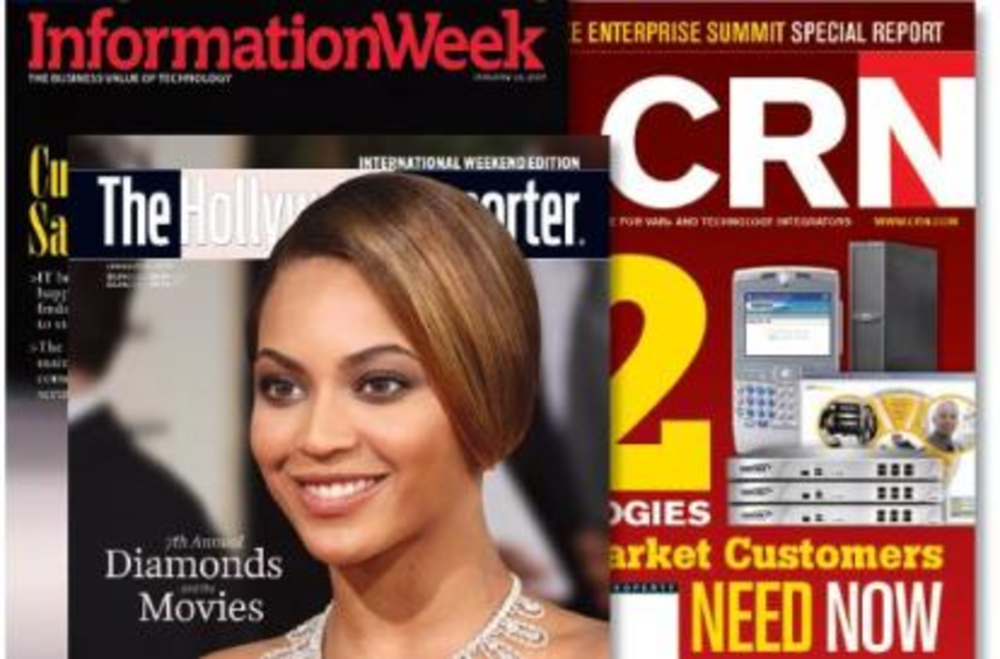When InformationWeek, a b-to-b magazine for IT professionals, launched a redesign in January 2009, the print book was just the first step. To stay relevant to its tech-savvy readers, the brand also boosted efforts to drive readers to the InformationWeek Business Technology Network online and laid plans to launch new digital properties.
“You have to adapt to the changing information needs of the audience,” says InformationWeek publisher John Siefert. “It’s very much associated with, and significant to, a larger strategy of aligning the content [with] how someone wants to receive it.”
In other words, InformationWeek — along with many of its b-to-b brethren, including DMNews – must adapt its audience outreach and engagement strategies to meet new audience demands. Additional factors pushing these trade publications to change include the explosion of new technologies, the economic situation and the globalization of the business world.
“The challenges for b-to-b publishing right now are the economy and budgets,” points out Robert DeMarzo, SVP and editorial director for the Everything Channel, which publishes CRN, VARBusiness and other print and Web properties. “Marketers and advertisers are under incredible pressure to deliver ROI to their bosses. It’s a challenge you can only overcome if you have a diversified business model.”
This model includes print magazines — which are seen as valuable sources of in-depth reporting — and Web sites, social networking sites, data and analytics business arms and events. These multiple platforms not only make a media brand more appealing to the advertisers that are its bread and butter, they also help audiences find and interact with brands on their own terms.
In fact, in many ways, media companies are becoming technology companies, says Paul Miller, CEO of United Business Media’s TechInsights. “They will use technology to get more targeted and get more control of the Web site, and then they will bring in all of that useful information to other network and community tools,” he explains.
Following this trend, InformationWeek offers the printed magazine, a news site, blogs, a research site called InformationWeek Reports, an analyst site called InformationWeek Analytics and many other properties, all creating a giant information Web that stands a much better chance of snaring the right reader than a single magazine. The brand has also created a wiki-style page called Global CIO Thinktank, which is a private community site that invites readers to communicate and engage with each other and the brand.
The Hollywood Reporter (THR), a trade magazine for the film industry, redesigned in 2007 and has followed a similar strategy. “We leverage the digital platforms as best we can,” says THR publisher Eric Mika. “We realized there’s an audience who loves print, but there’s also a fast-growing, hardcore audience that gets all its news online. We’ve launched digital platforms for some very specific needs, and those drive more people back to the publication online or in print and creates greater brand awareness.”
Among THR’s digital platforms are several Web sites and a capability called THR Reviews, where readers can respond to THR’s reviewers and write their own reviews.
THR is also leveraging some of the basic advantages enjoyed by most b-to-b marketers, including a well-defined and finite audience. For instance, it bucked the consumer magazine trend and grew its circulation in 2008 by sending qualified copies to industry guild members. These influencers need the magazine’s content to make informed decisions during awards season, and once the free run of awards season is over, the magazine’s audience development team e-mails, calls and mails guild members seeking conversions to paid subscriptions.
With such a specialized audience, THR depends on an extensive customer database. Not only does the database get the magazine and other branded content to the right people at the right time, it also helps segment that information, so readers get only what is most relevant. “I think that the most important aspect of audience marketing is to develop an extraordinary database that can be sliced and diced,” says Mika. “Eventually, our readers could even customize the news and information they want to receive.”
Miller agrees, adding that many b-to-b publishers, including TechInsights, use extra content such as newsletters and whitepapers to get more people to opt in to their databases. “The more you know about the audience, the more successful you are going to be,” he says.
Once a b-to-b publisher has its database in order, it must go through the lengthy process of qualifying and segmenting its leads. With a finite universe of potential readers, and a limited qualified circulation, each publisher wants to make sure its magazine is only going to the top decision-makers in the field.
InformationWeek‘s database, for example, has 100,000 qualified professionals on hold to receive the magazine, but insists on maintaining its current 440,000 circulation.
“We could flip a switch and increase the circulation, but my perspective is to make sure I have the best 440,000 readers at any given time,” Siefert says.
And, if these business publishers keep evolving, providing specific, relevant content to readers where and when they want it, using their databases wisely, and leveraging new tech tools like whitelabel social networks, they should be able to keep their elite readers through the best and worst times.
“The edge is that we have spent years and millions upon millions of dollars cultivating that specialized and particular customer that your advertiser wants,” DeMarzo says. “I can’t imagine that that business will go away, because there has always been a need to reach that very specialized audience with technological or strategic information about their business that they will not get from business-to-consumer media.”








